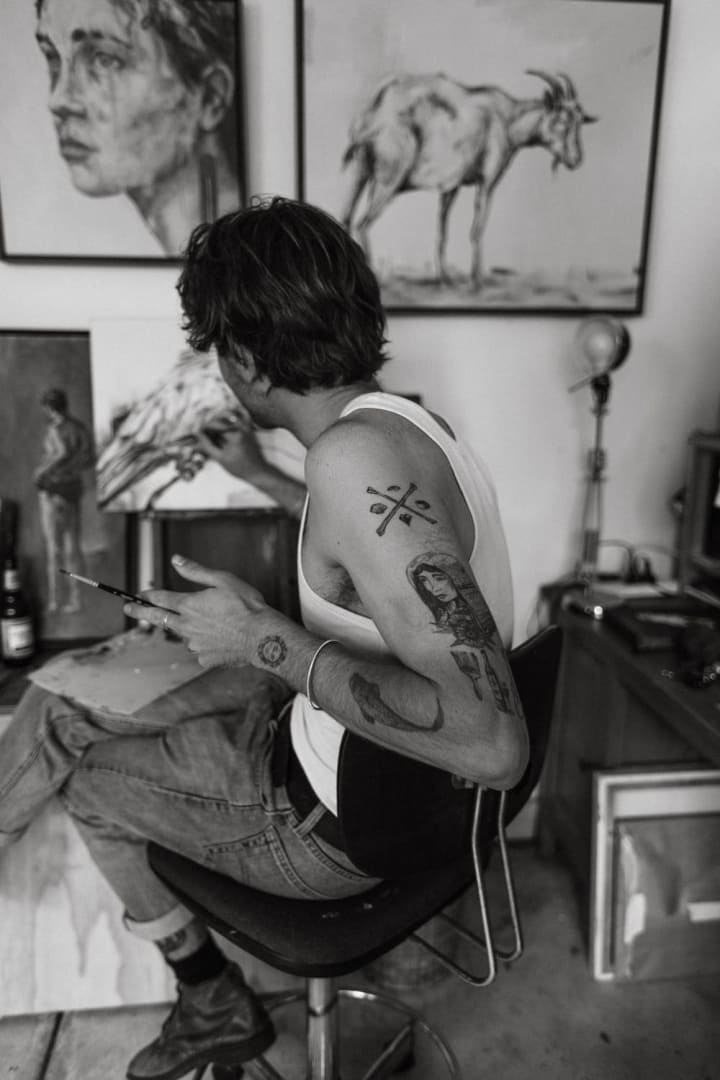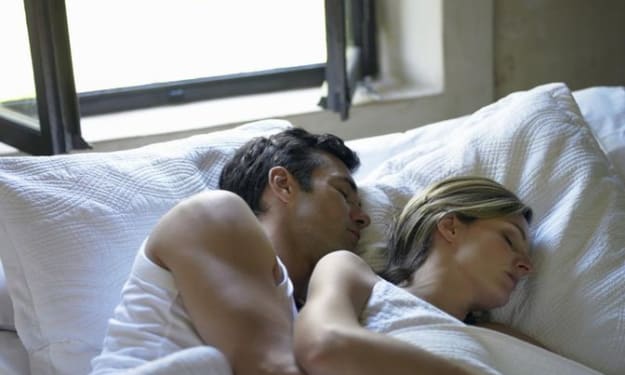Art Therapy, Relaxation and Mindful Living
the difference of Art Therapy in the Healthcare Profession

The concept of mindfulness originated from early Buddhist practices, an historically encouraged and enlightened meditation with emphases on awareness of one’s emotions, sensations, and consciousness (Hinchey, 2018). Art Therapy today practices mindfulness to help an awareness of self and a capacity to reflect. Mindfulness, meditation and behavioural therapy in the expression of art therapy, creates mindfulness through art (Goguen- Hughes, 2010). Mindful relaxation techniques are used in mindful based art therapy to reduce damaging effects of stress by activating the body’s natural relaxation response, through practises of mindfulness relaxation techniques and mindful meditation. Mindfulness is based on meditation principles without judgment, paying attention to experiences and emotions in the present moment. Artistic expression for mindful living, relaxation and meditation have the same fundamental principles of Art in the mental health profession in that it is a creative process of art making to improve and enhance the physical, mental, and emotional wellbeing of people. Jensen, (2016) offers the creative process of artistic self-expression helps people to resolve conflicts and problems, develop interpersonal skills, manage behaviour, reduce stress, increase self-esteem and self-awareness, and achieve insight. Art therapy is a creative method of expression with therapeutic techniques to gain mindfulness, relaxation and meditation. Whereby, art therapy as a profession used in the health care system assists in treating patients with mental health disorders and psychological problems.

Lawrence, (2011) proposes mindful-based art therapy engages the person in image making in a relaxed and curious way to observe innovative ways of being. The Art therapy process allows the slowing down of repetitive thinking patterns to bring the client into their present consciousness. Art making process and meditation are both solitary and often function with the context of silence. Lawrence, (2011) explains the inner quite space and the inner world of thoughts, feelings and experiences can be witnessed, organized, created and externalized. This process can cultivate awareness, that grounds and opens the fruits of mindfulness techniques, contemplative and creative practices. Art therapy creates a space to allow the unconscious fortuitous expression, to be seen, heard and felt. That is, the mindful process invites one to enter an authentic relationship with self, process and product, navigating the inner being by imagination and intuition (Lawrence, 2011). Jensen, (2016) offers Art therapy integrates the field of human development, visual art; drawing, painting, sculpture, and other art forms using creative process models of counselling and psychotherapy. Art therapy in the Health Care model is used for children, adolescents, adults, older adults, groups, and families to assess and treat the following: anxiety, depression, and other mental and emotional problems and disorders, substance abuse and addictions, family and relationship issues, abuse and domestic violence, social and emotional difficulties related to disability and illness, trauma and loss, physical, cognitive, and neurological problems, and psychosocial difficulties related to medical conditions (Jensen, 2016).

The Health care profession uses expressive therapies with complex interventions combining psychotherapeutic techniques with activities which sponsor creative expression (Yasgur, 2017). In 2014, the National Institute for Health and Clinical Excellence (NICE), considers the treatment of Psychosis and Schizophrenia in adults with recommendations of including art therapy in conjunction with pharmacotherapy to enhance a patient’s creativity, emotional expression, communication, insight, and the ability to relate. Yasgur, (2017) enlightens mindfulness-based interventions have been found to be effective for improving outcomes in patients with schizophrenia spectrum disorders. Evidence based literature on studies of art therapy as an intervention for psychosis also found that therapists and clients consider art therapy to be beneficial, is meaningful and is an acceptable intervention.

Yasgur, (2017) edifies during active psychosis, art therapy is useful for disordered thinking and cognitive impairment, features of psychotic disorders, which make it problematic for engagement in primarily talk-based therapies. This mindful process involves art projects permitting participants to bring their presentness, rather than verbal or cognitive processing, to the activity (Yasgur, 2017). Experts share, patients with delusions or other forms of active psychosis tend to avoid groups, however, if the patient attends, they might be irritable, but can still work and have a positive experience, even if the client is unable to verbally follow the activity. Art expression allows the person to benefit from art therapy without verbalising, that is, the client picks up the art materials, and they can begin work at a consistent speed or participate (Yasgur, 2017). Dr Kendell’s research by UK’s National Collaborating Centre for Mental Health, has similar views conveying, “even if there is no clinical benefit for people with schizophrenia using art therapy, it could however relieve their negative symptoms” (Art Therapy, 2019).

In a psychiatric setting, therapists provide success by oriented activities consuming art materials. While comparatively, art therapists that provide Art psychotherapy, use art and a creative process to assess, treat and explore issues to help restore emotional and psychological functioning (Hamilton, 2017). The scope of practice for the professional art therapist includes the use of psychotherapeutic principles, art media, and the creative process to assist individuals, families, or groups that increases the awareness of self and others; coping with symptoms, stress, and traumatic experiences; enhances cognitive abilities; identifies and assess clients’ needs to implement therapeutic intervention to meet developmental, behavioural, mental, and emotional needs (Hamilton, 2017). Art therapy used in the Healthcare profession is an evidenced-based therapy with assessments to examine both psychological functioning and unconscious conflicts using art modalities for clinical diagnostic purposes along with treatment interventions (Hamilton, 2017). Whereas Art therapy for art expression differs by that one’s artistic creativity is accessed for mindful living, using holistic art mediums or as a means of relaxation techniques to admit feelings of mindfulness and meditation states to help manage a person’s emotions and access their creative intelligence. The ability to be calm and focused in stressful situations that cannot be changed is important for distress tolerance, overcoming anxiety, and healing from trauma. Art is an expression that reflects the inner state of the artist and then by externalising the world.

Overall, the benefits of Mindful art are numerous to include; relaxation, tension and stress release, calming the nervous system, accessing the imagination, freedom of expression, use of left and right brain, stimulates creative thinking, problem-solving, mental and emotional wellbeing, and self-care (Art therapy, 2019). Artistic expression and art therapy can find the implicit core meaning of expression which replaces a humans’ inner life to outer manifestation of their inner state. It uses art media and the creative process to aid coping skills, stress management, and reinforcing a sense of identity. Mindful art living diverges from art therapy when used in the Health Care model to provide mental health treatments for clients for trauma, grief & loss, depression, chronic illness, substance abuse, and mental health illness. Art therapy programs and art therapists work from various settings to include hospitals, clinics, public, social service, and community agencies, wellness centres, educational institutions, businesses, and private practices (Art therapy, 2019).

References
Art Therapy, (2019). Retrieved from https://www.arttherapy.co.za/
Art Therapy, (2019). Part 1. Art therapy and mental health; Specific mental health problems.
Encyclopedia Britannica, (2019). Philosophy of art: Art as expression. Retrieved from https://www.britannica.com/topic/philosophy-of-art/Art-as-expression
Goguen-Hughes, L. (2010). Mindful healthy mind, health life: Making mindfulness through art. Foundation for a mindful society
Hamilton, M., P. (2017). Connecticut Art Therapy Association (CATA). Retrieved from https://www.cga.ct.gov/2017/PHdata/Tmy/2017HB-06252-R000223-Hamilton,%20MaryConnecticut%20Art%20Therapy%20Association-TMY.PDF
Hinchey, L, M., (2018). Mindfulness-based art therapy: A review of the literature. Inquiries Journal/Student Pulse LLC, 10(5), 1.
Jensen, K. (2016). Art therapist. Health Professions Network. Retrieved from https://hpnonline.org/services/art-therapist/
Lawrence, D. (2011). Mindfulness-based Art Therapy. Retrieved from https://www.denalawrence.com.au/?q=node/3
Yasgur, B.S. (2017). Psychiatric Advisor; Art therapy as an intervention for psychosis. Haymarket Media
About the Creator
Shanie Walker
Shanie Walker is a Holistic Behavioural Therapist, awards, and honours in Art Therapy, Dialectic and CBT. Shanie is a Psychologist and Registered Professional Hypnotherapist. Accredited Nutritionist, and Master Degree in Fitness.






Comments
There are no comments for this story
Be the first to respond and start the conversation.